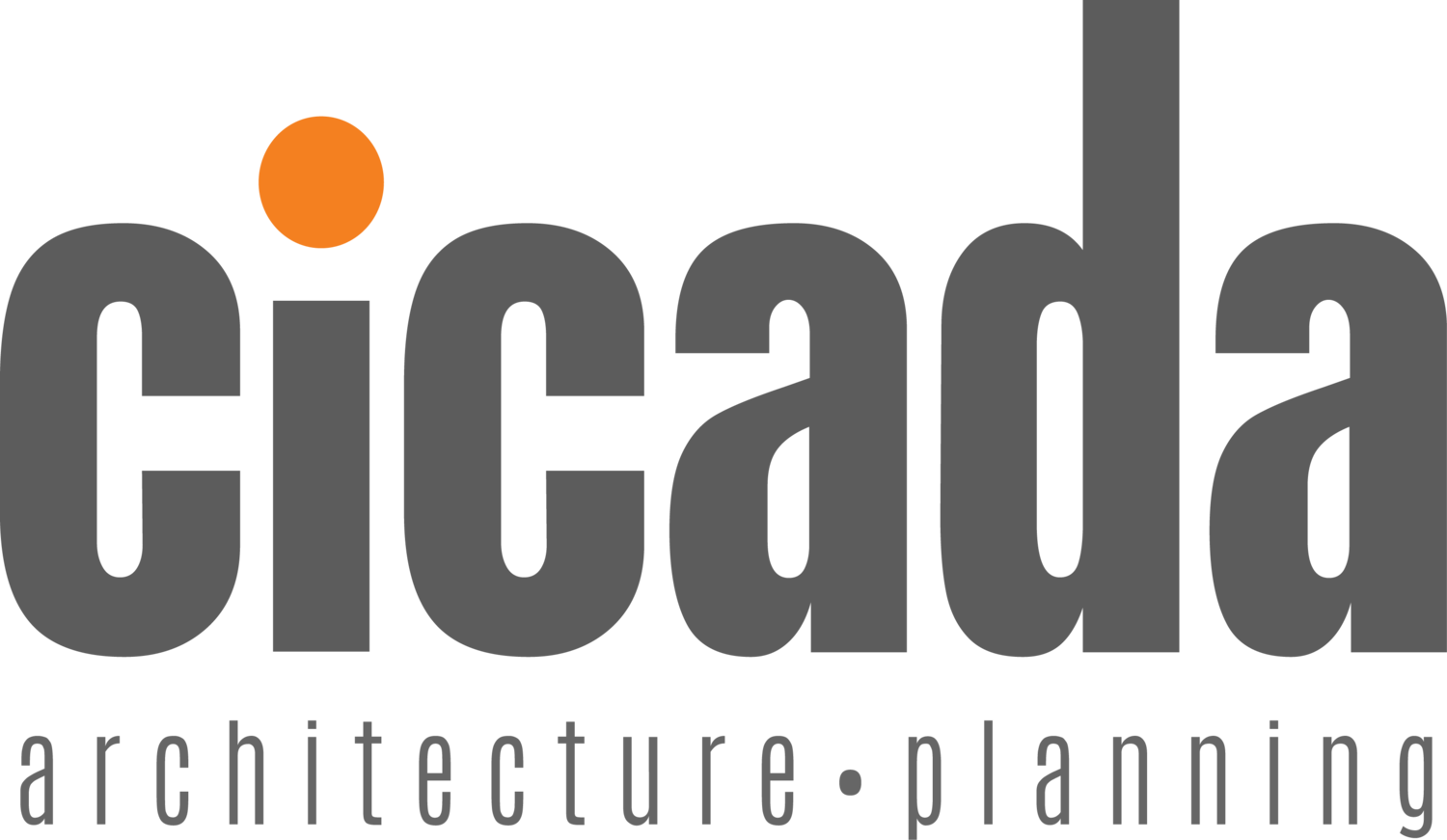Make School Design Central to Neighborhood Transformation
Great schools build community and, in so doing, achieve enviable education outcomes.
And while school leaders with the vision and ability to build great schools are key, the design of the school building can help or hinder the creation and ongoing development of a great school.
Hi. We're CICADA. In this newsletter, we share insight on designing school buildings that support the entire community.
Schools are so much more than places for learning. While there's no one-size-fits-all solution for school design, we use the framework presented here to prioritize and design supportive learning environments.
Our framework is informed by the work of psychologist Abraham Maslow (1908-1970), who theorized that in order for an individual to fulfill their true potential, a series of needs from basic to higher-order must be met. Our work in school design seeks to support the five levels of Maslow’s famous pyramid of needs in the physical design of places and spaces.
Maslow’s Hierarchy of Needs Pyramid
Here are some of the ways we design buildings that do just that:
1. Physiological
Physiological needs (water, food, shelter) are essential for life. Buildings provide water and shelter, of course, and most schools prepare and serve food. Taking one step further, a school that provides these basic needs in harmony with the natural environment also provides students with a behavioral model for how to productively fulfill their own basic needs. This life lesson in stewardship will, in turn, benefit the larger community.
For example, urban schools can teach young children where food comes from, through on-site gardens that produce food that is served in the cafeteria, with waste composted back into the garden. At the St. James School in Philadelphia, the master plan we created with them for the long-term development of their limited urban site included maintaining their gardens, beehives, and henhouse, reflecting the School’s emphasis on fresh, organic food in a neighborhood with limited access to fresh food.
Access is also essential. Our communities are composed of people with a range of physical abilities. While many schools in urban areas on the East Coast occupy buildings that were built in the 1920’s or earlier, only in the past 50 years have we been designing buildings that are accessible to all. In communities served by older school buildings, investing in accessibility is essential to creating an equitable space for everyone in the community.
Concept study for St. James School Master Plan.
2. Safety
The perception of safety is essential to the ability to learn. Good design can strengthen students’ perception of safety through thoughtful planning strategies.
Access to security into and throughout schools is necessary in today’s world. In addition, it’s important to include design features that lead to a psychological sense of safety. Elements like hallways without hidden corners, interior and exterior windows, and entrances that provide visibility between the interior and exterior help students feel safe. School designs that incorporate clear circulation and wayfinding support students’ confidence and sense of mastery of their environment, also contributing to their sense of safety.
Thoughtful design can create strong links between building interiors and adjacent outdoor spaces. Landscaping strategies can unobtrusively define public vs. private spaces, providing healthy access to protected outdoor spaces and beautifying the neighborhood.
Color, graphics, and view portals at Joy of Caring.
3. Belonging
Good schools inspire a sense of belonging among students, a feeling that this is their place. Grouping classrooms into “neighborhoods” and providing ways for students to personalize the spaces they spend the most time in school encourages that sense of belonging. The overall plan should create opportunities for interaction and collaboration between students of different ages or on different tracks. Students can see and connect with one another through shared common spaces.
The best schools extend that feeling to the entire community. Common spaces, assembly areas, and flexible classrooms can act as an essential "third place" for the larger community, welcoming community members to gather, socialize, or host events. Co-locating neighborhood amenities like a small health clinic, food pantry, or thrift store within the school provides care for students, their families, and neighbors, cementing the community with a shared sense of belonging and connection.
Reading haven at Richard Wright Elementary School.
4. Esteem
A school’s exterior and interior appearance and condition send an unspoken message to students and the school community about what they deserve. Concrete block walls convey the message that students can’t be trusted with materials that are easily damaged. Conversely, natural wood, comfortably upholstered chairs, and views to nature send a message of comfort and welcome, creating an environment students want to be in. It sends the message that the students and their community are respected and valued.
Programming and design strategies such as elements that provide opportunities to showcase students and their work both inside the school and in the community are supportive of students’ self-esteem and help to develop their sense of esteem for others. Schools that truly understand their own communities develop a sense of community needs, and are able to develop programs that involve students in addressing them.
Creating spaces where groups of students help each other learn supports different learning styles while they enable participants to give back and participate in the life of the school. A feature that is being incorporated throughout all levels of education is a “maker space” or fabrication studio, where students can creatively solve problems and create the solutions with their own hands.
Building projects and self-esteem at Benchmark School Innovation Lab.
5. Self-actualization
The final step in Maslow’s pyramid, self-actualization refers to the ability to become the best version of oneself. The self-actualized student is capable of setting goals and achieving them; the self-actualized community is active in and in tune with supporting its children on that path. Our goal in designing community schools is to design places and spaces that have the capacity to support students, their families, teachers, administrators, and neighbors as they seek to find and express the best version of themselves.
Tech Freire scholars ready to engage the world!
Every school has needs unique to time and place, approaches teaching and learning in its own way, and has unique resources. While the needs we seek to meet through design are universal, the way they’re fulfilled is specific to each school. Our application of Maslow’s Pyramid to every design project creates buildings that support the growth of individuals and communities.
Want to talk about how CICADA can help you build community?







